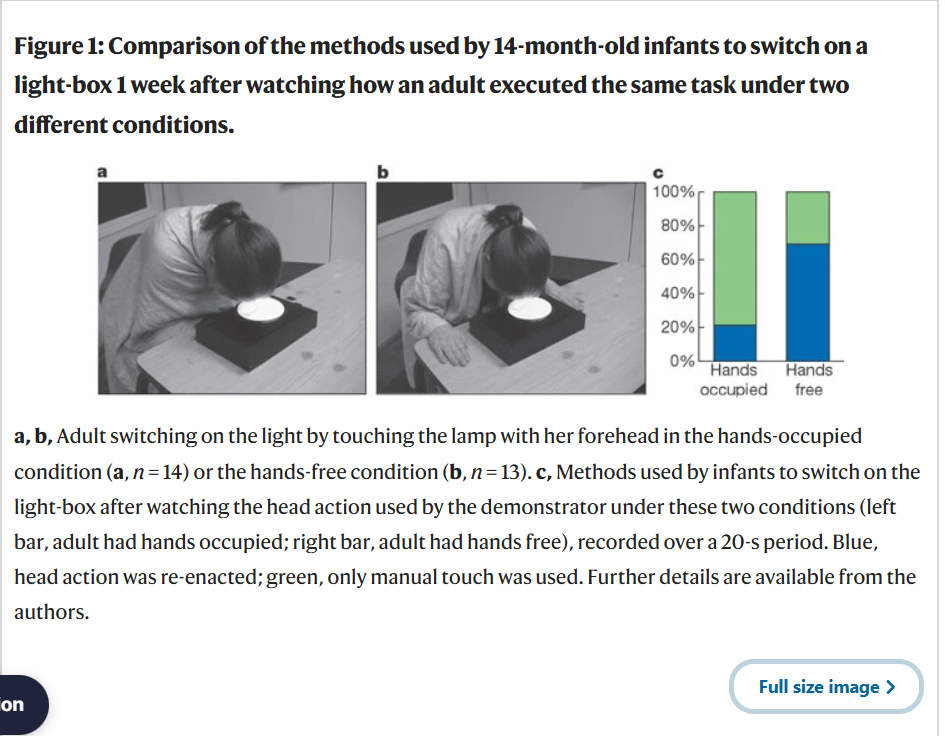Lecture 15 - Rational Embodiment in Social Cognition
1/6
There's no tags or description
Looks like no tags are added yet.
Name | Mastery | Learn | Test | Matching | Spaced |
|---|
No study sessions yet.
7 Terms
what are the central questions of this week’s lecture?
how do we perceive social and emotional stimuli?
How do such stimuli change our brain and body?
How do they influence our judgements and behaviors?
what is the differences between “dumb” and “clever” embodiment?
Dumb “reflexive” embodiment
Automatic, encapsulated, unconscious
inflexible, “perception-action” links
learned via repeated association
Clever “rational” embodiment
meaning-dependent
flexible and conditional
socially situated
how has the imitation of creepy mindless robots been studied?
Procedure:
Stimuli: angry and happy android “expressions:
Conditions:
spontaneous mimicry: “just watch the robot”
active mimicry: “make this expression:
Measures:
android’s servo activity
facial EMG
Results:
Both conditions mimicked the android regardless of whether they were instructed to or not
what is some useful about the existence of automatic imitation?
Mimicry is causally involved in emotion perception
Three Points
Blocking facial feedback impairs emotion recognition
Mimicry training facilitates emotion recognition
Help for patients with emotion recognition deficits?
What was the conclusion of the rational imitation study on preverbal infants?
Here we show that if an adult demonstrates a new way to execute a task to a group of infants aged 14 months, the children will use this action to achieve the same goal only if they consider it to be the most rational alternative. Our results indicate that imitation of goal-directed action by preverbal infants is a selective, interpretative process, rather than a simple re-enactment of the means used by a demonstrator, as was previously thought

Describe the Einstein cooperative vs competition study.
Two conditions:
Competitive
Einstein beat you (smile on face)
Einstein loses to you (angy face)
Cooperative
Einstein wins for the team (smile on face)
Einstein loses for the team (angy face)
Measurement:
EMG Zygomaticus (cheek)
EMG Corrugator (brow)
Results
Competitive
beats you = frown
loses to you = smile
Cooperative
win together = smile
lose together = frown
Conclusion
Participants did not simply mimic Einstein. This suggest social context component to facial expressions.
Describe the study that about social context, status, and power.
Be familiar with mimicry patterns of HP and LP participants when exposed to HP & LP targets
Perceiver (subject):
High Power: “write about a time when you had control or authority over another person or group of people”
Control: “write about events you experienced yesterday”
Low Power: Write about a time when another person or group of people had control or authority over you . . .”
Target
High (executive)
Low (fast food)
Procedure
Show picture with descriptions (name + status)
ex. Mark, Grocery Store Stocker
Results
For smiling, LP participants smiled to all targets, regardless of their expression. In contrast, HP participants exhibited standard smile mimicry toward LP targets but did not mimic the smiles of HP targets. Instead, HP participants smiled more when those HP targets expressed anger. For frowning, all participants showed a more intense mimicry pattern to HP targets.
Conclusion
These results demonstrate that spontaneous facial responding—detected by sensitive, physiological measures of muscle activation—dynamically adapts to contextual cues of social hierarchy